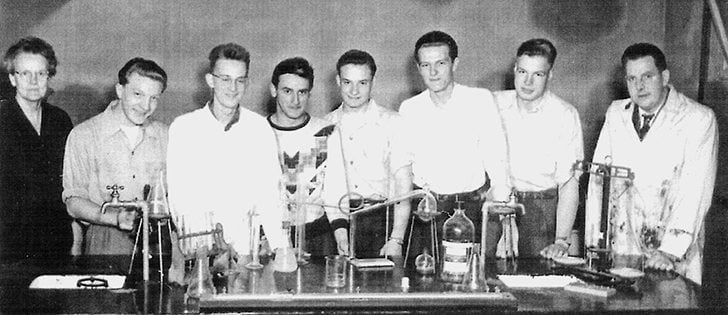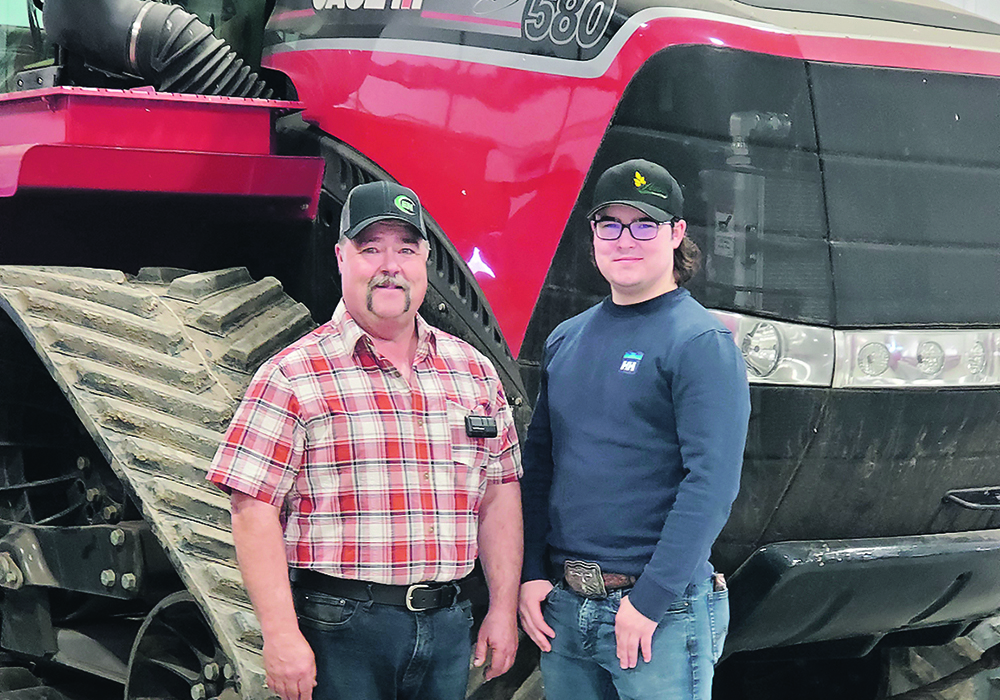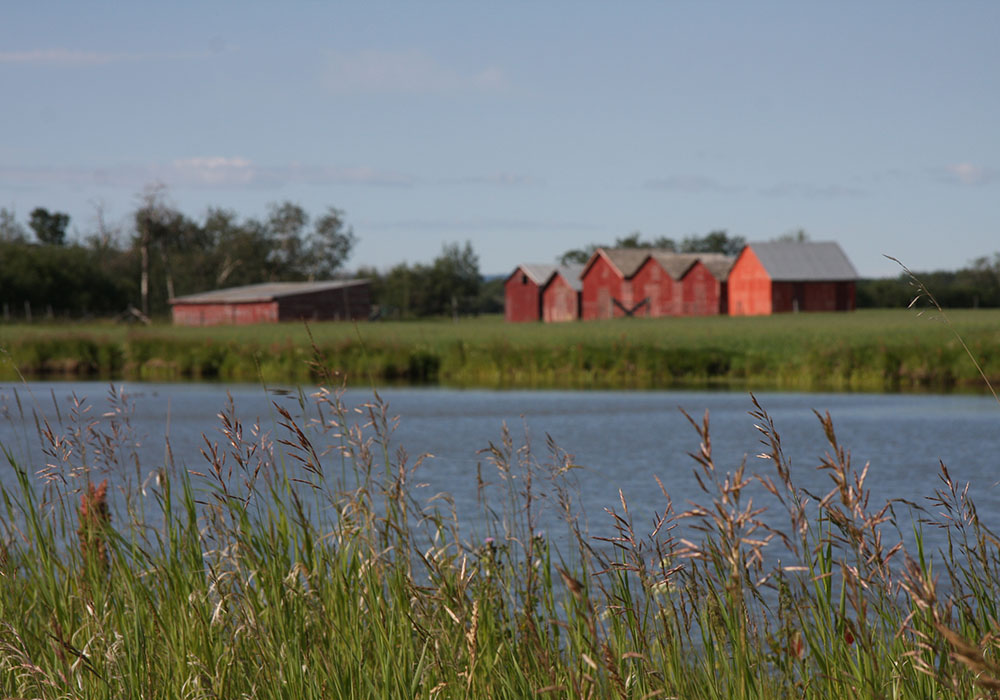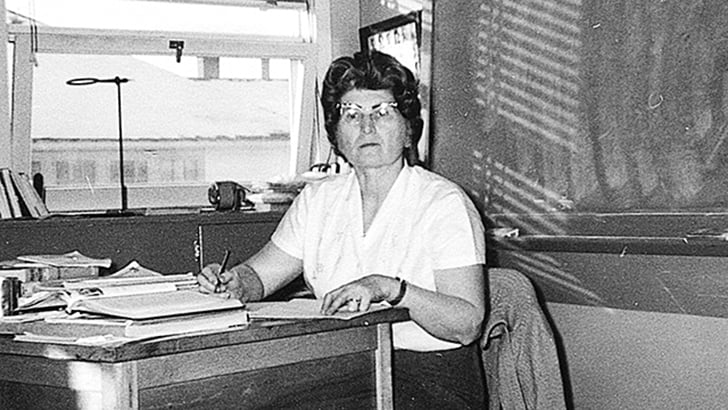Volunteers’ efforts | East Coulee School Museum preserves school, community and coal mining histories
EAST COULEE, Alta. — The bell sounded and children would pour through wooden doors at opposite ends of the East Coulee School, one for girls and one for boys. Inside, they reassembled in classrooms with tidy rows of sloped wooden desks and oversized windows.
But before entering the schoolhouse in Alberta’s badlands, they likely dipped their blackened boots into a recessed water trough to clean off coal dust so prevalent in the area.
Former geologist Brent Noland, president of the Dinosaur Valley Heritage Society, said there were more than 100 mines in the district.
Read Also

Know what costs are involved in keeping crops in the bin
When you’re looking at full bins and rising calf prices, the human reflex is to hold on and hope for more. That’s not a plan. It’s a bet. Storage has a price tag.
“Coal was king,” said Noland, sporting a “hoodoo you love” T-shirt reflecting the many toadstool shaped geological formations near the tiny town.
East Coulee had as many as eight mines, said Barb Steeves, manager of the East Coulee School Museum.
“There would have been a huge amount of coal in the air here.”
She said the low grade thermal coal was extracted mainly for heating and railways, which declined after the oil and gas industries began in the 1940s.
Mining brought many people to the town, which once boasted as many as 4,000 residents. A one room school in the district was replaced by a four classroom, one storey art deco schoolhouse in East Coulee in 1929.
Temporary classrooms were set up around town to house the influx of mining families in the winter months, so in 1934, the school doubled in size. It included a high school in the basement, complete with science labs, and four more classrooms on the main floor.
The mines and population eventually dwindled, and the school shrunk to include classes only to Grade 9. The library was moved to the basement, where a soot encrusted coal furnace was already housed.
“It used to be sort of creepy going down to the library,” said Steeves.
The school closed in 1972 and the museum opened at the site in 1985. During the closure, windows were broken and water leaked in.
“There was so much water in the basement, locals would ice skate in the basement,” she said.
Noland said it took a group of volunteers in the town, whose population has dwindled to 160, to save the school from the bulldozer and turn it into a museum, preserving school, community and coal mining histories.
He produces an annual music festival, the East Coulee Springfest, to support museum operations.
In addition, the heritage society is seeking funding to preserve and renovate the school and explore its uses as a cultural centre on a year round basis. It is also seeking provincial historic resource status.
Noland said the area’s riches, from coal to dinosaur fossils, were first discovered by geologist Joseph Tyrell, whose name is attached to a dinosaur museum at Drumheller, Alta.
The school displays classrooms much as they would have been in its early years, and offers today’s schoolchildren a look into the past and a taste of its offerings, including cod liver oil often dosed by teacher Miss Morrison in period garb. A strap and dunce cap perched near the teacher’s desk were used as punishment for misdeeds.
History books and visits by former students paint a vivid picture of school days here.
Steeves heard tales of students sneaking into the science lab.
“One lady told me a story of her and her friend would go in there on cold days and mix chemicals until one day they started a fire. They never did it again,” she said.
“Another student told me how they used to wear boots with a bit of metal on the heel and they would mix two chemicals together and then stomp on them with the metal part of the boot and it would cause a small explosion. They got the strap for that.”
Visiting the principal was likely daunting to children, with his office perched a few steps above the main floor.
Marie Nagloren, who taught here in the 1950s, recalled the chilling sound of a siren sounding.
“Even today whenever I hear a siren I think of East Coulee. A few days after I first started teaching, a siren wailed throughout the town. To my surprise, all the kids got up and ran for the door without making a sound. They disappeared before I knew why they’d left. Fortunately, no one was killed in that mining accident. “
Steeves said the siren alerted residents of accidents at a mine.
“All the residents would be worried it was someone they knew.”
A coal-fired furnace heated the school until last year, but occasional breakdowns usually meant time off school for children.
Planes often flew over East Coulee during the Second World War spreading pamphlets about buying war bonds.
Steeves related how one student thought he would like to try parachute jumping. He strapped one on his back, climbed onto the school roof and jumped, expecting the chute to open. Instead, he fell like a rock to the ground and broke some bones.
Other stories tell about teachers who would strap the entire class if they couldn’t identify the culprit in a prank.
Students were also subjected to a book bonk or a flying chalk or eraser to the head if caught sleeping in class.
The school housed 360 at one time, so classrooms often included more than 50 children.
Former student Amy Barclay Zacharuk said the school had a good ball team, and the men sometimes played against the women. Tennis was also popular.
“We marked out, rolled and played on our own tennis court (not far from where the school is). One hot Sunday, I played tennis with no stockings on, very daring for those days and someone brought it to the attention of the school board. I was told that I must be properly dressed if I wanted to play tennis, and I wore stockings from then on. I wouldn’t let that happen now, but I don’t remember even questioning their decision.”
Student Margaret S. Brodie Holt said the World Series in the fall could create problems.
“I am reminded of the afternoon that the high school inspector came to pay his annual unannounced visit, only to find about one-third of the students present, all of them girls. The boys? They were all over at Goronuk’s cafe listening to the game on the radio. I think the principal would not think it very amusing. But East Coulee was a dyed in the wool baseball town.”
Former students shared stories of of lit hay bales on main street and soaped store windows on Halloween in addition to outhouses being relocated or toppled.
“That seems to be a common prank no matter where you lived,” said Steeves.















